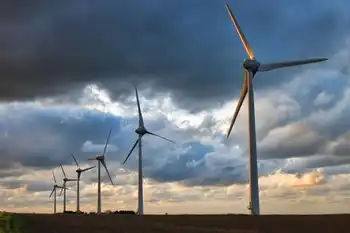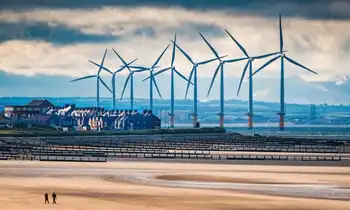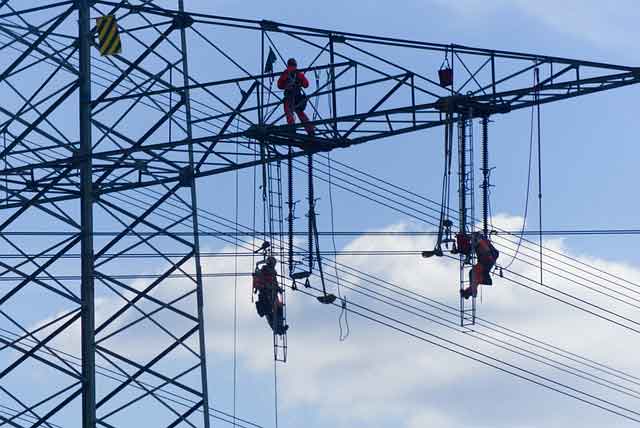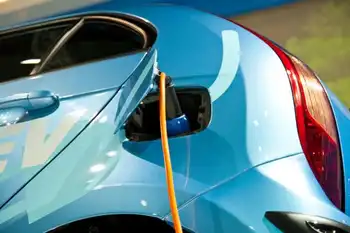Nuclear revival bumps against atrophy
Sound like a leap of logic?
It turns out that Osaka-based steel-making giant Japan Steel Works Ltd. makes much more than traditional swords of the kind used by noble warriors of the country's pre-industrial Edo Period. The company is also the world's only maker of ultra-large forgings, a crucial component in the construction of most new nuclear reactors.
These forged parts, made from steel ingots weighing up to 600 tonnes, – equivalent to 100 African elephants – have 30-centimetre-thick steel walls able to withstand the immense pressures inside a nuclear reactor's core.
They also keep dangerous radiation from escaping to other areas of the plant or the surrounding community.
A fear exists, however, that the huge demand for ultra-large forged parts over the coming years won't be met with enough supply.
There are about 30 reactors being built around the world today, dozens more within 10 years, and hundreds more are in the pipeline, according to the World Nuclear Association.
This global nuclear renaissance, however, follows a prolonged period of atomic decline when supply chains contracted, skills grew rusty and costs skyrocketed.
Japan Steel, for example, is currently equipped to supply only five reactor forging sets each year, with each set including an ultra-large forging.
"The atrophy of nuclear manufacturing infrastructure is significant in the United States, but also worldwide," Sharon Squassoni, a nuclear expert at the Carnegie Endowment for International Peace, told members of U.S. Congress during testimony in March.
"Ultra-heavy forgings for reactor pressure vessels and steam generators constitute the most significant chokepoint."
Estimates vary, but sources say that even if Ontario were to pick a nuclear reactor design today and place its order, it would have to wait two or three years in the queue.
And if the bottleneck tightens, that could derail the province's already long-range plan to break ground on a new nuclear plant in 2012 and have it up and running by 2018.
As well, some estimate a deposit of $100 million for each forgings set would also be required to reserve a spot for each planned reactor.
Queen's Park isn't expected to select a technology until the end of the year. Between now and then, the waiting list could grow much longer.
Adding more uncertainty is the fact Japan Steel also makes large forgings for industrial components in petrochemical plants and fossil-fuelled power plants, so its attention is divided.
Chuck Pautler, a vice-president with Ontario Power Generation, said the company is aware of the bottleneck and its impact on plans to build new reactors in the province. "Is it an important consideration? You bet it is," he said.
But one reactor design's pain may be another's gain. AECL, the federal Crown corporation hoping to sell at least two of its Advanced Candu Reactors in Ontario, doesn't require any ultra-heavy forgings for its heavy-water reactor design.
"We use pressure tubes, one of our many unique competitive advantages," Dale Coffin, spokesman for AECL, told the Toronto Star before a communications ban was imposed on the company as part of the province's bidding process.
Candu reactors, running on natural uranium, use heavy water to encourage the splitting of uranium atoms that ultimately release energy under a controlled reaction.
This approach was taken historically to make Candu reactors more flexible and safer to operate, not to mention cheaper to fuel.
But huge volumes of heavy water are needed, which under traditional designs would require an ultra-large pressure vessel.
Designers of the very first Candu reactors couldn't find a Canadian manufacturer that could produce such large forgings, so they came up with an entirely different design that uses hundreds of six-metre long pressure tubes, each holding 13 fuel bundles that run horizontally through the reactor core.
Not only are the pressure tubes easier to make, they already come from more than one supplier, said Coffin.
Candu reactors do need large forgings for steam generators, but they don't have to be as thick and there are other steel makers that can supply them.
"We believe we will be able to manage their materials comfortably because of the size of the Candu materials, which are much less critical than other candidates," said Tom Noda, U.S. sales manager for Japan Steel Works America.
Bill Garland, a professor of nuclear engineering at McMaster University who teaches courses on Candu design, said the Candu feature insulates AECL from the most critical supply-chain bottleneck facing the global nuclear industry. "I would say the Candu design has a significant advantage in terms of forgings," he added.
But some nuclear experts argue the pressure-tube design is also Candu's Achilles' heel. "Think of a car with 400 lines into the engine and 400 lines out. Who would buy a car that had that design?" said Frank Greening, a former nuclear engineer at Ontario Power Generation.
Greening said each tube has to be closely monitored and tested, and a feeder pipe connected to each tube that carries the heat used to make electricity is prone to erosion. This, he said, contributes to the need for a costly, mid-life refurbishment of Candu reactors.
Meanwhile, AECL's rivals in the Ontario race aren't sitting on their hands. France's Areva NP and U.S.-based Westinghouse Electric Co. LLC are closely monitoring the forgings bottleneck and working quickly to ease the crunch.
Armand Laferrere, president of Areva Canada Ltd., said its parent company purchased France's Sfarsteel in 2006 to give it more control.
"This gave us in-house capacity for forgings manufacturing," said Laferrere. "We are still dependent on Japan Steel for one forging per reactor but can manufacture all others."
Westinghouse appears most dependent on Japan Steel. It needs 23 forgings in total for each of its next-generation reactors.
"Of these, we believe 10 to 15 could be purchased from suppliers other than JSW," said spokesperson Gilbert Vaughn. "We are currently evaluating potential suppliers for these forgings."
There's also hope that market forces will ease the supply-demand crunch.
Other makers of large forgings, including South Korean's Doosan Heavy Industries & Construction Co. and Japan Casting & Forgings Corp., are spending big to expand their capacity.
"Doosan will have the capability to make all of (our required) 23 forgings in late 2009 or 2010," said Vaughn.
China First Heavy Industries Company Ltd. recently said it is investing $2.3 billion to increase its capacity to supply 600 tonne ingots for ultra-large forgings.
Even the British are getting into the game. Sheffield Forgemasters International Ltd. said last month it will seeking financing to build a massive press for ultra-large forging – by 2011 it is hoped.
Peter Birtles, group director of Sheffield, told industry publication Nucleonics Week that the potential ultra-large forgings shortfall is "so enormous" that many are rushing to bridge the gap.
But it won't happen overnight. The question is whether the provincial government will put its faith in the market by choosing Areva or Westinghouse.
Or, alternatively, will it give AECL another shot in Ontario and avoid a bottleneck that could cause major delays on a project in which being on time is perhaps more critical than being on budget.
Related News

Edmonton's 1st electric bus hits city streets
EDMONTON - Your next trip on Edmonton transit could be a historical one as the city’s first battery-electric bus is now on city streets, marking a milestone for Edmonton Transit Service.
“Transit has been around since 1908 in Edmonton. We had some really small buses, we had some trolley buses several years later. It’s a special day in history today,” Ryan Birch, acting director of transit operations, said. “It’s a fresh experience… quiet, smooth riding. It’s going to be absolutely wonderful.”
In a news release, Mayor Don Iveson called it the largest purchase of electric buses in Canadian history.
“Electric buses are a…





